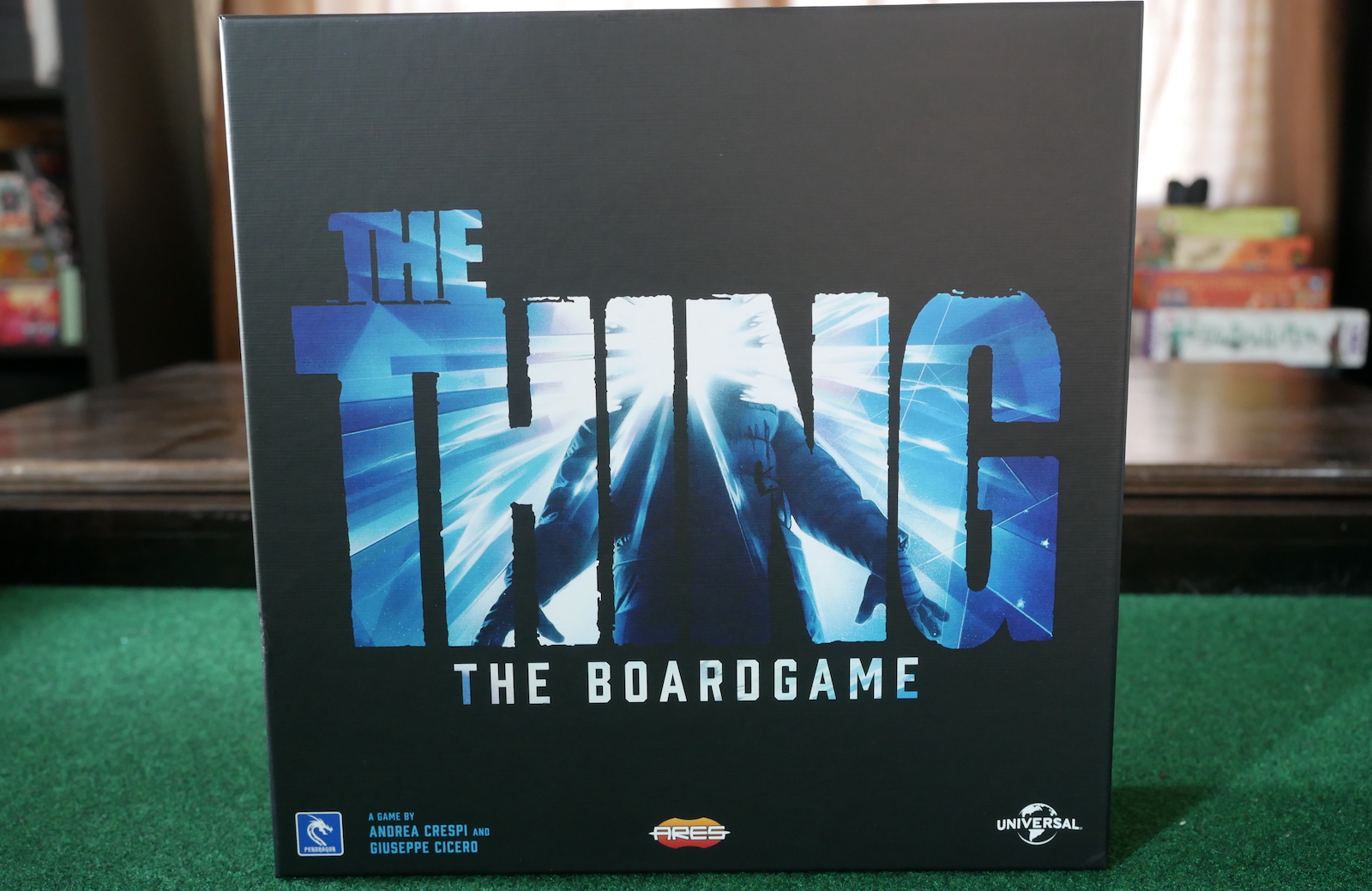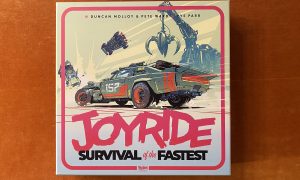Full disclosure: The Thing (1982) is my favorite horror movie, and I realize that I get a lot more out of this theme than other people. I have always loved the way the movie spreads fear and suspicion, and this has led me down a dark path of playing a lot of social deduction games.
It’s difficult to talk about social deduction games without mentioning Battlestar Galactica (BSG). BSG is a game released in 2008 that has stood the test of time, and has even returned as an updated Lovecraftian reimplementation called Unfathomable (2021). Many social deduction board games are trying to iterate on the design of BSG, and they hope to knock it from its long entrenched position as the premier social deduction board game. While BSG isn’t for everyone, it’s hard to deny BSG’s place in tabletop history. People who play these games will almost always compare a game against BSG as it is the “gold standard” of these games.
When it comes to adapting the movie The Thing (1982) or the short story that inspired it, Who Goes There? (1938); The Thing: The Boardgame (2022) is the latest of several board games to do so. Previous entries are The Thing: Infection at Outpost 31 (2017) and Who Goes There? (2018). Each game has similar elements, but they each try to execute on the theme slightly differently. Who Goes There? plays 3-6 players and focuses on the survival aspect of the game. Each player needs to stay alive in order to win, and the social deduction elements take a back seat to simply enduring through the game. Conversely, The Thing: Infection at Outpost 31 is the closest to BSG. It seeks to update BSG into something faster and sleeker. The Thing: Infection at Outpost 31 plays 4-8 players and focuses on the social aspect of the game. Given both of these games have different interpretations of a similar source, the question is where does The Thing: The Boardgame land?
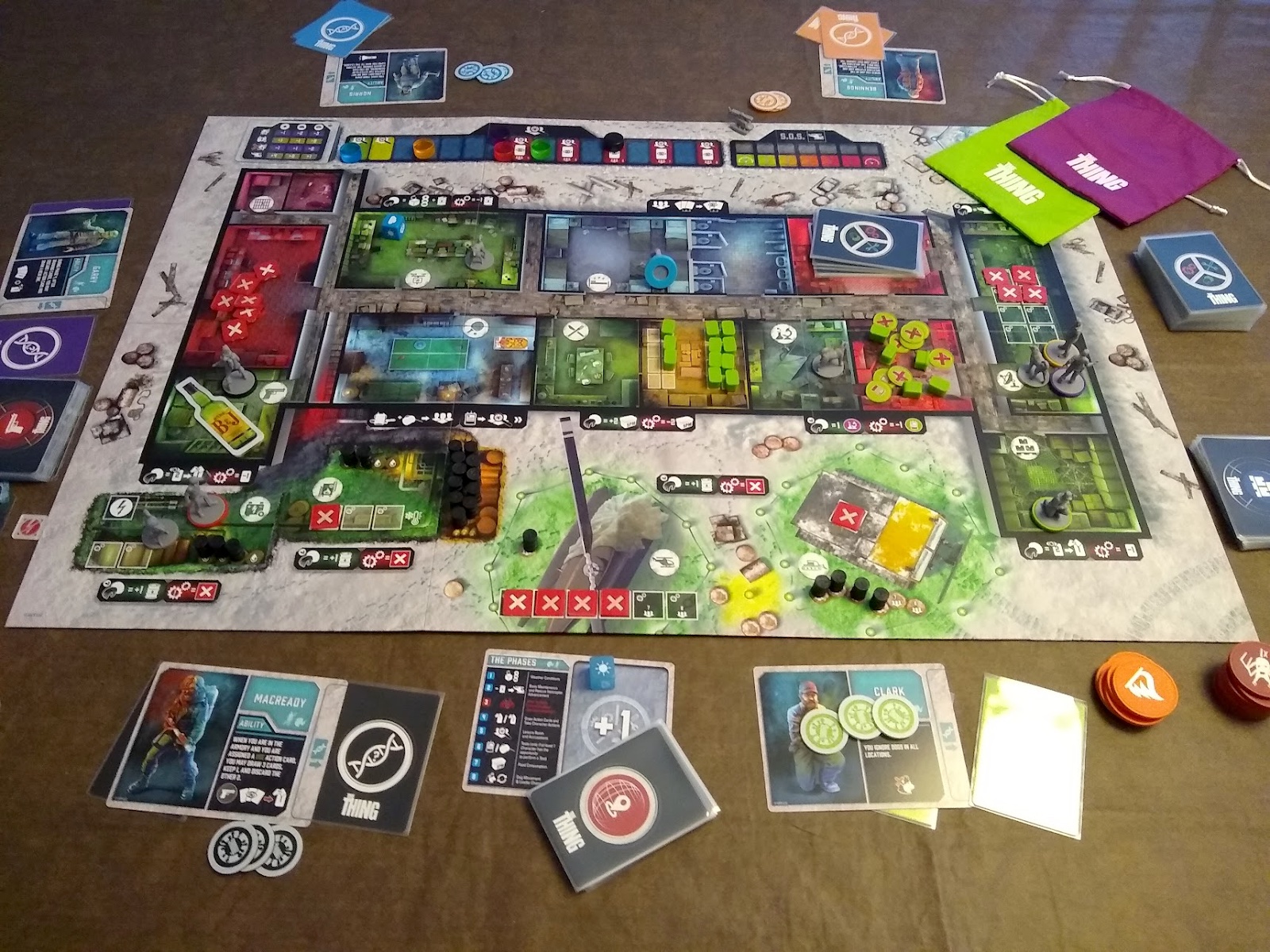
The rules
The first hurdle for The Thing is that the rules are a bear to learn. The rulebook is laid out fairly well and does a serviceable job of communicating the game. However there are a lot of edge cases throughout the game. The rulebook does try to cover everything, but, as always, players will have more questions than the rulebook can answer. Even after a fair amount of time reviewing the rulebook, and having crawled through BGG; I still have a few questions left unanswered. A FAQ was released by the publisher that does clarify a lot of rules, but know that your first play will have some time spent answering questions that come up during the game.
Our group’s main focus
Our group focused on a few key mechanics in The Thing with the first one being the “Leader” role. A lot of these types of games place certain players in leadership positions. For example, Battlestar Galactica has an admiral and a president. These players have more power than other players, and this helps keep the others’ envy and distrust flowing. BSG places the admiral and president in charge of an aspect of the game or those players will make key decisions when they come up. The Thing: The Boardgame has a player become the “Leader” each round and it can change depending on where players go on the map. In The Thing: The Boardgame, the leader is very powerful, and they make leadership roles in other social deduction games seem tame by comparison. While the collective actions are submitted by the players, the leader will dictate the actions players can take throughout a round.This means the leader can save or sink the ship that is this game, and leads me to wonder about the sheer level of power they have during play. The game does make it difficult to be the Leader for more than one round, but depending on where the token has landed you may not want to spend your whole turn to become the Leader for the next round.
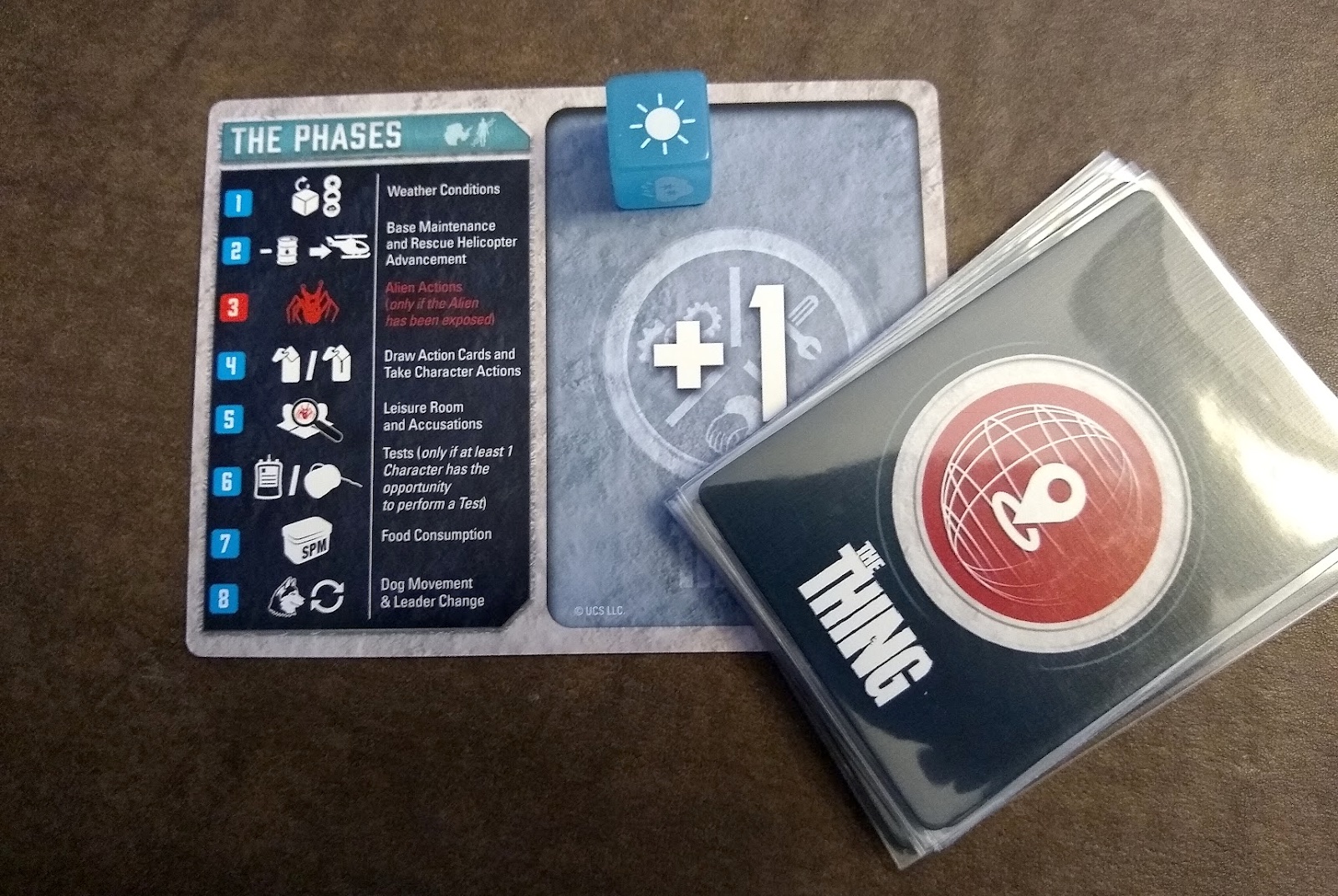
The Leader card and location deck
The second mechanic our group latched onto was the armory; specifically the weapons that you could acquire from it. We quickly determined that everyone would want a weapon especially if you could find the flamethrower. The flamethrower is very powerful, though this likely doesn’t come as a shock to anyone familiar with the movie. If someone acquires a flamethrower, they can suddenly become your best friend as you glue yourself to them for protection, or you wonder if they’re maniacal laughter is a bad sign as they begin burning down the base. When a flamethrower came out of the armory, it felt like the game changed just a bit. Everyone waited to see what that person was going to do with their newly acquired flamethrower. Our group had “heated” discussions about who should be allowed to use the armory, but since the leader determines actions the answer became: The Leader uses the armory. This lead us to some beautiful infighting as the humans accomplished nothing and became no closer in reaching (human) win conditions. I personally love this small aspect of the game: nothing like our own fear and distrust to hurt ourselves with.
Hunter or the hunted
The revealed alien player(s) mechanic is another unique feature to this game. Once an alien has been unmasked, they choose spaces on the board to occupy before the humans choose where to go. When players move around to take actions, they may be attacked by the revealed alien if they go to the same space. The revealed alien(s) almost have a hidden movement type of gameplay to them. This creates its own tension because being attacked can kill you. When I say kill you, I don’t mean changing teams like in a lot of these games: here, your character would die and you would be removed from the game. Player elimination is a controversial mechanic, especially as game length goes up. In each of our games someone has died to the revealed alien, and each player had a…negative reaction to this happening to them. The rules for player elimination were made clear, but I understand why you’d have a frowny face should this happen to you. Worst of all, if you are an unrevealed alien and you are eaten, you are still eliminated from the game. The upside to this mechanic is that when we had an revealed alien player the other characters cared where people were going. Other games lack actions for revealed evil players, but The Thing creates a new set of actions for revealed players. We had to put more thought into where we were going and we had to consider where we thought the revealed alien player was. Do we try to fight the alien(s) or avoid them? Do we group up for safety or go by ourselves to try to get more done?

The Thing attacks the kitchen
The kitchen sink
Though the leader, weapons, and the revealed alien player were the mechanics our group placed at the center of our debates, there are still a lot of other small mechanics running around the game too. At the beginning of a round the Leader will roll a weather die and this will determine how much fuel the base consumes that round. This is a small amount of randomness to how often players have to spend their actions refueling the power systems in the base. There are dogs(?) that move around the base and if you are caught alone with one you may change to the alien team. While they can be caught to remove their risk, this requires some teamwork and trust between players.
At the end of each round if players have acquired the right components blood tests can be used to determine someone’s allegiance and could be used to force a player to reveal as an alien. However, the revealed alien may do more damage once they’re in the open. The humans can run out of food in the base and begin starving. When the base runs out of food, every player’s hand size is reduced by one, but players didn’t seem too hampered by this limitation. The power can fail and create darkness. In the dark, players must randomly turn in their action cards the leader rather than choosing. This also didn’t feel debilitating. Eventually in several games we ended up being both starving and in darkness, and yet the humans soldiered on without seeing too much change. I did stop making fun of Norris as his special power is to have a flashlight. I’m sorry Norris, your character power is much better than I originally thought.
There is even a full suspicion track to help players remember which player(s) has been taking risks or interacting with others more often than others. All of these mechanics add to the stew pot that is this game, but if all of this sounds like a lot, it is.
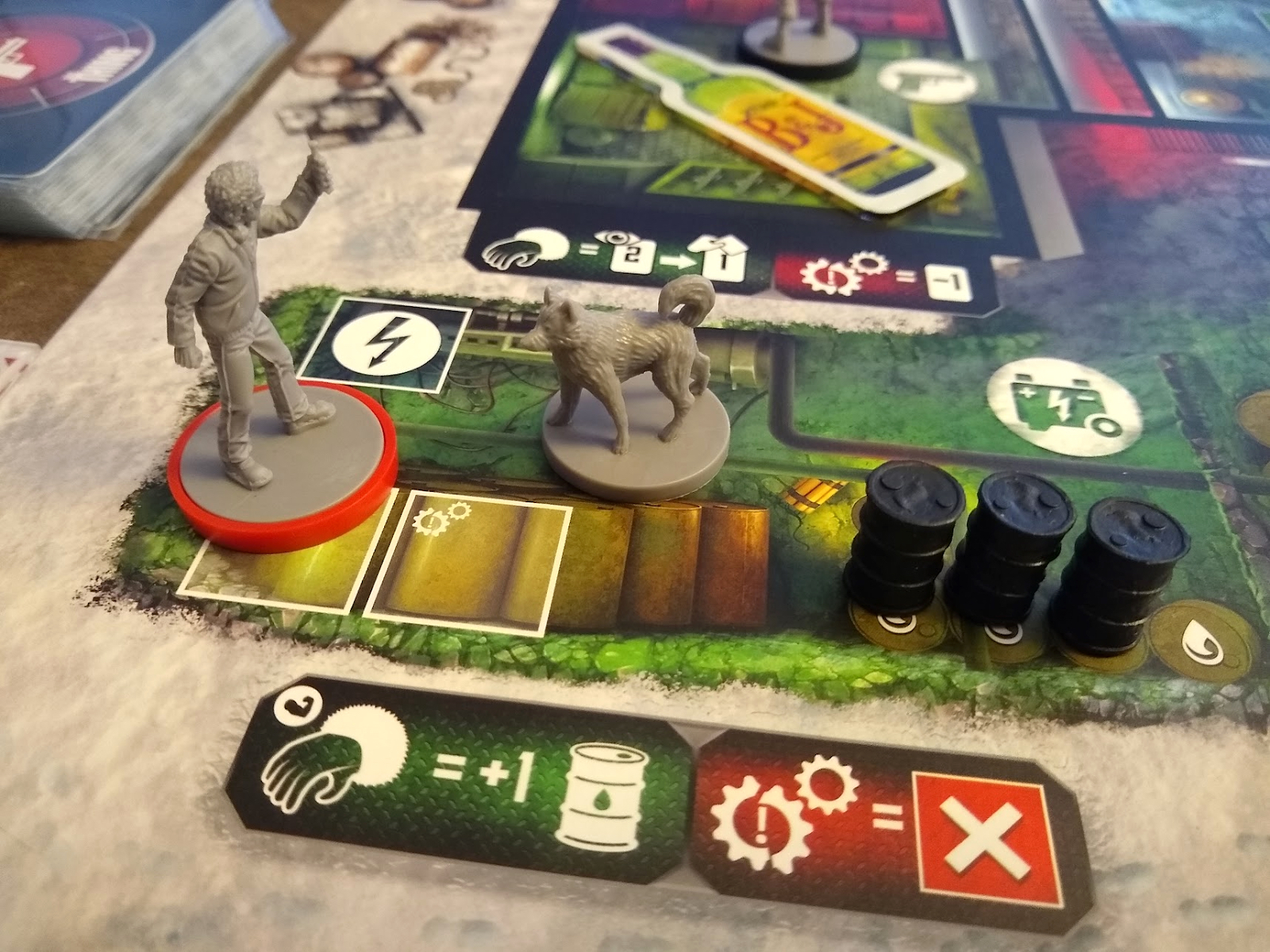
Windows encounters a dog?
The end game
One key difference with The Thing is that the win conditions require the humans to escape without leaving a human player behind and there cannot be an unrevealed alien escaping with them. Other games in this genre allow the humans to have some margin for error on leaving someone behind. The Thing has a process for the humans escaping depending on which escape method gets activated, but it means the humans must be sure about who to escape with. The humans can risk escaping with imperfect information, but the win conditions for humans seem more difficult than in similar games. This can cause players to want to play another round in order to acquire more information and this can drag out the game. At some point, the humans will have to risk leaving with or without perfect information.
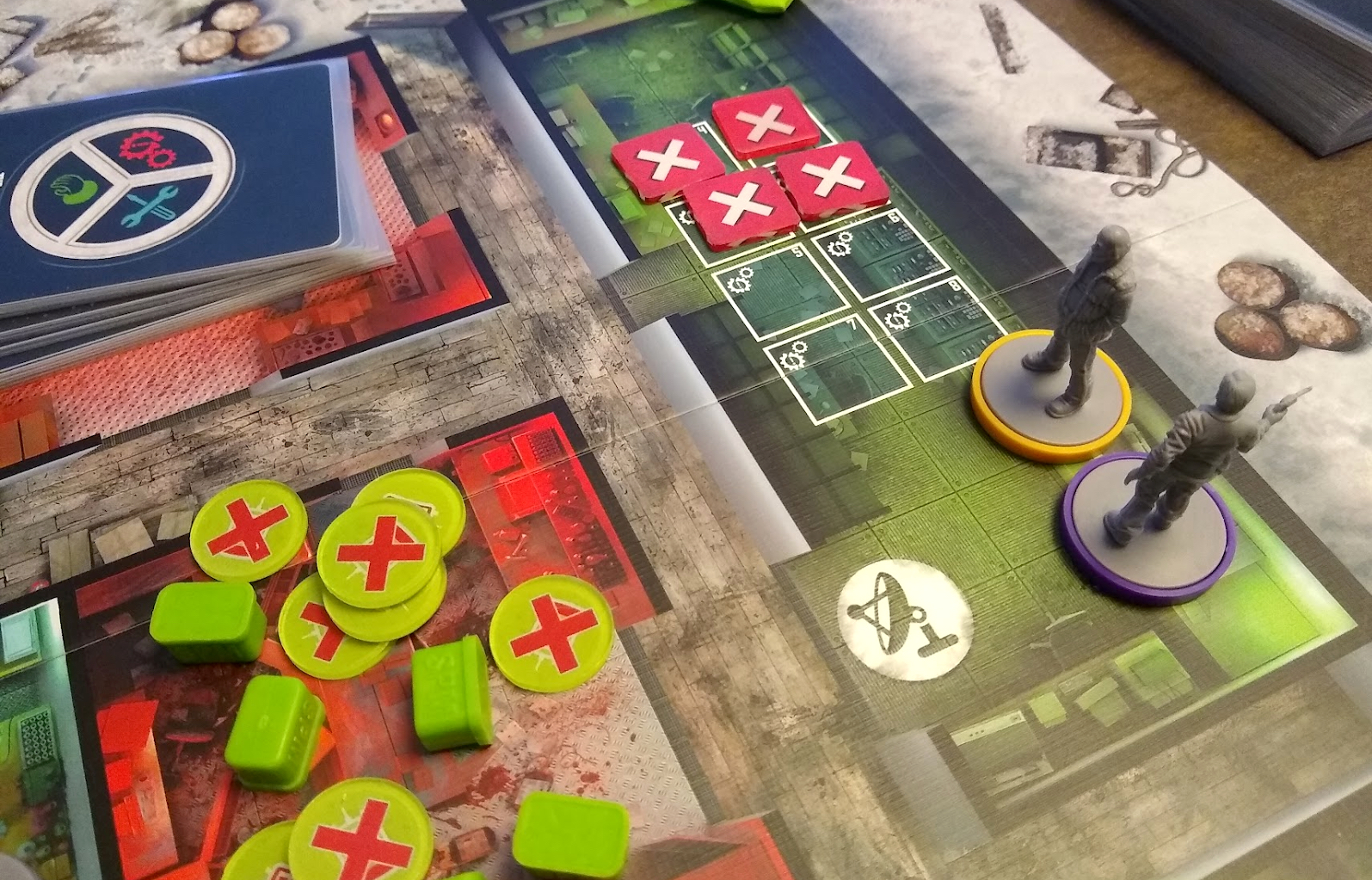
Lastly, I’d like to talk about the components for the game. While I have played with the upgraded Kickstarter edition, I don’t think any of the upgraded components are necessary. The cardboard standees have a nice color to them compared to the gray miniatures. Though I’m sure if a skilled painter worked on the miniatures they would look amazing. The upgraded tokens are a mixed bag… The lab, damage, and dog tokens are all great, but it turns out the upgraded player contagian tokens can reflect light (depending on your table) and actually give away which one of them is the alien token. While this isn’t a big deal, it is something our group noticed and had to be wary of when we were doing contagion checks. The components for the game are otherwise beautiful.
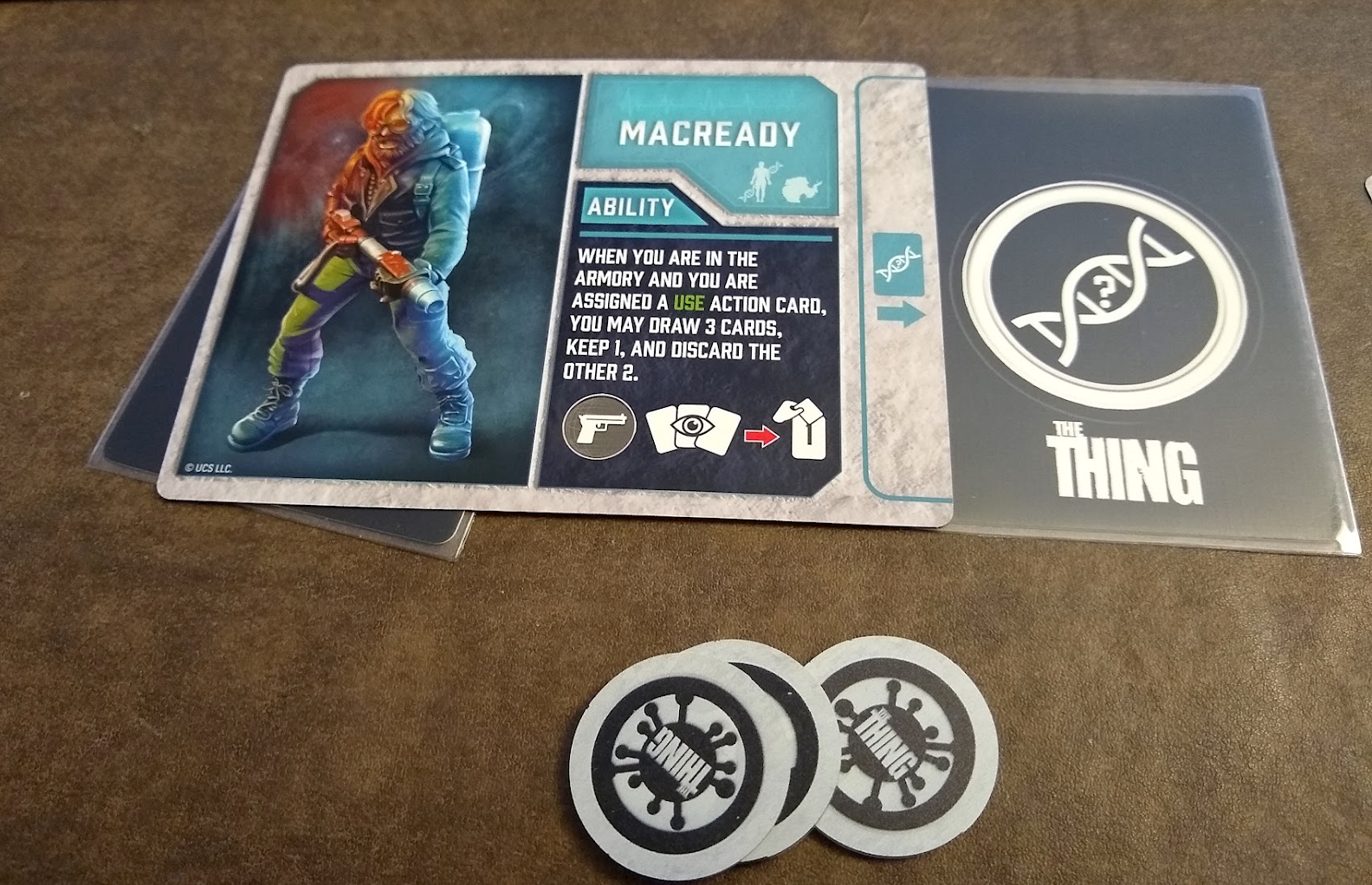
MacReady player components

Whether or not this game is enjoyable is likely going to depend on the players in each game. Like almost all social deduction/hidden traitor games, The Thing: The Boardgame is built upon the players and the choices made each game. My impressions of the mechanical aspects of the game is that it’s good - maybe even great? There are tough choices to be made as a human or an alien player, and each game I’ve played was significantly different than the others. You can play as a hidden alien trying to escape or a revealed alien attacking the humans. Humans have a lot of choices on what to prioritize and how to survive. There’s some depth to the paranoid hell that is this board game. Maybe next time I play I will try to start the snowcat all by myself so that I can escape on my own or determine who escapes. Will that work? Probably not. I’ll likely die in the process, but at least I have that option. Games in this genre have endured because of the people who play them, and I think this game earns a spot on the shelf. The Thing is a familiar blend of social deduction ingredients, yet it still has its own distinct flavor falling somewhere in the middle between Who Goes There? and Infection at Outpost 31. We need to survive, but we also need to find The Thing hidden among us. Now, let me tell you why you should let me use the armory - if I find a flamethrower I promise to use it responsibly...
PROS
- Game captures the essence of the movie
- Interesting gameplay for revealed aliens
- Base components are nice
- Social deduction elements are thematic and relevant the entire game
- Has dogs (?) in the game
CONS
- Games can be long (5+ hours)
- Rulebook/Rules difficult to parse
See below for our list of partners and affiliates:
